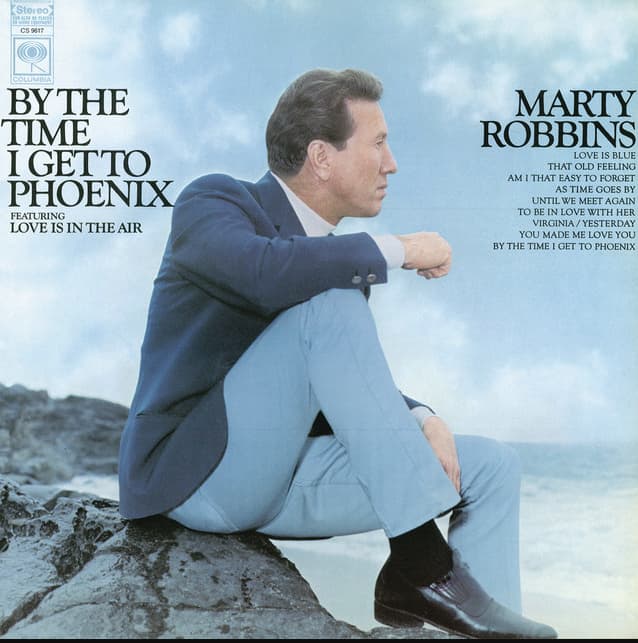
When That Old Flame Refuses to Die: Marty Robbins Captures the Everlasting Heartache of a Classic Standard
A timeless ballad of enduring, inescapable love and nostalgia for a former flame.
There are certain melodies that don’t just echo in the memory; they seem to live right there in the heart, waiting for a chance encounter to bring them roaring back. Such is the power of “That Old Feeling,” and few singers could capture its essential ache and enduring romance quite like the magnificent Marty Robbins. For those of us who grew up listening to the velvet baritone of Robbins, this track serves as a wistful reminder of his remarkable versatility and his gift for inhabiting the soul of a song, regardless of the genre.
Song Details and Context
While Marty Robbins is perhaps best known as the masterful purveyor of Western-themed story-songs like “El Paso” and “Big Iron,” he was, at his core, one of country music’s great crossover artists, equally comfortable with rockabilly, gospel, Hawaiian songs, and, crucially, pop standards. His recording of “That Old Feeling”—a song originally written in 1937 by Sammy Fain and Lew Brown—was released in 1968 as part of his album, By the Time I Get to Phoenix.
This wasn’t a single aiming for a number one chart position, but rather a testament to Robbins’s artistry, showcasing his ability to hold his own amongst the era’s biggest pop singers. Because it was an album track and not a primary single, Marty Robbins’s version did not register a significant peak on the major Billboard Pop or Country Singles charts upon its release, a common fate for standards recorded late in an artist’s career. The song itself, however, had already proved its hit-making pedigree three decades earlier; the original 1937 recording by Shep Fields and His Rippling Rhythm Orchestra was a massive success, spending four weeks at number one, underscoring its enduring appeal as a timeless pop classic.
The Ever-Burning Flame
The story behind “That Old Feeling” is not one of a gunslinger’s tragic fate or a runaway bride, but a far more universal, yet equally powerful, human experience: the inescapable pull of the past. The simple narrative of the song revolves around a chance meeting with a former lover. Seeing them unexpectedly, the narrator is immediately flooded with memories—a “thrill” felt once more, a heart that “stood still.”
The brilliance of Fain and Brown’s lyrics lies in their concise, direct language, which perfectly articulates the crushing realization that despite the passage of time and attempts to move on, the deep, passionate love for this person is not gone; it is merely dormant. The spark of love, the narrator admits, is “still burning,” and the promise of a “new romance” is now rendered “foolish to start” because that “old feeling is still in [the] heart.” It’s an ode to the impossibility of truly forgetting a deep love, a candid confession that some emotional ties can never be severed.
Marty Robbins’s Interpretation: Mr. Teardrop’s Touch
When Marty Robbins sang a ballad, he brought a unique combination of strength and vulnerability. He earned the affectionate nickname “Mr. Teardrop” earlier in his career for the emotive, heart-breaking quality he infused into sad country songs. He applies that same emotional gravity to this pop standard.
In Robbins’s hands, this track transcends mere nostalgia. His smooth, rich baritone—a voice capable of both a cowboy’s toughness and a lover’s tenderness—gives the song a reflective, almost cinematic quality. It’s the voice of a man who has lived, loved, and lost, a seasoned heart acknowledging a painful truth. While the arrangements on the 1968 album By the Time I Get to Phoenix were often lush and sophisticated, leaning heavily into the popular country-pop sound of the late 1960s, Robbins ensures that the core sentiment—the deep, sudden pang of seeing an old love—remains front and center.
For older listeners, the song becomes a kind of emotional mirror. We know that feeling: the memory that jumps out from the shadows of time and reminds us of a passion that once defined us. In his delivery, Marty Robbins doesn’t just sing the words; he breathes life into the regret, the sudden yearning, and the poignant beauty of an unforgettable connection. It reminds us that our personal histories are written not just in grand events, but in these quiet, enduring moments of an old, yet vital, heart. It is a recording that stands proudly alongside renditions by contemporaries like Frank Sinatra or Ella Fitzgerald, proving once again that a great singer transcends genre—he simply sings the truth.